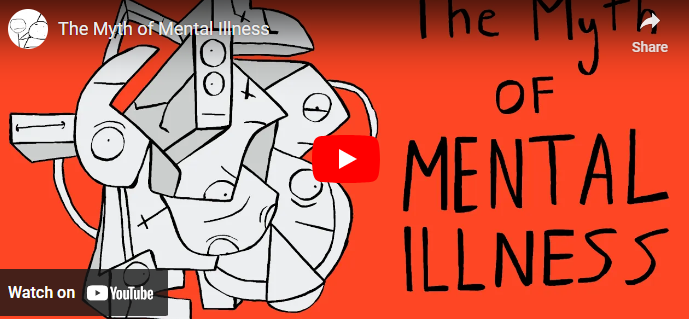
Contents
Benefits of Mindfulness in Education
Mindfulness in education is a powerful approach that has gained significant recognition in recent years. mindfulness practices in schools can have a profound impact on enhancing learning and focus among students. This article will explore the various benefits of mindfulness in education and shed light on why it is essential for both teachers and students.
One of the significant advantages of mindfulness in education is its ability to reduce stress and anxiety. Today’s fast-paced and technology-driven world can often overwhelm students, leading to increased stress levels. By introducing mindfulness techniques into the classroom, students are provided with the opportunity to regain a sense of calm, peace, and resilience. Mindfulness practices, such as deep breathing exercises and body scans, promote relaxation and help students manage their emotions more effectively.
Furthermore, mindfulness cultivates a positive classroom environment by promoting compassion and empathy. When students are encouraged to practice mindfulness, they develop a greater understanding of their emotions and the emotions of others. This increased emotional intelligence leads to improved relationships with peers and teachers, fostering a supportive and inclusive learning environment.
Another benefit of mindfulness in education is its impact on cognitive abilities. Research has shown that regular mindfulness practice enhances attention, focus, and memory. By practicing mindfulness techniques, students learn to redirect their attention to the present moment and become more engaged in their learning. This heightened focus allows students to absorb information more effectively, leading to improved academic performance.
Moreover, mindfulness in education promotes self-awareness and self-regulation skills. Through mindfulness practices, students develop a deeper understanding of their thoughts, feelings, and behaviors. This self-awareness empowers students to recognize and regulate their emotions, resulting in improved impulse control and decision-making skills. By consciously choosing their responses, students are better equipped to handle conflicts and challenges both inside and outside the classroom.
The benefits of mindfulness in education are numerous. By incorporating mindfulness practices in schools, students can experience reduced stress levels, enhanced cognitive abilities, and improved emotional intelligence. Furthermore, the cultivation of a positive and inclusive classroom environment promotes empathy, compassion, and overall well-being. It is essential for educators to recognize the power of mindfulness and incorporate these practices to enhance learning and focus among students.
Mindfulness Techniques for Teachers and Students
Mindfulness techniques are increasingly being recognized as valuable tools for both teachers and students in enhancing focus, reducing stress, and creating a positive learning environment. By incorporating mindfulness practices into their daily routines, educators can help cultivate a sense of calm and presence, while empowering students to develop self-awareness and emotional resilience. Here are some effective mindfulness techniques that can be employed by teachers and students alike:
Breathing Exercises
One of the simplest and most accessible mindfulness techniques is the practice of deep breathing exercises. By focusing on the breath, individuals can bring their attention back to the present moment, promoting a sense of calm and clarity. Teachers can guide students through breathing exercises at the beginning of each class or during transitions, providing an opportunity to center themselves and set positive intentions for their learning.
Body Scan Meditation
The body scan meditation is a powerful technique that involves progressively moving attention through different parts of the body, bringing awareness to physical sensations and promoting relaxation. Teachers can incorporate body scan meditations into their classrooms by guiding students to tune in to their bodies and notice any areas of tension or discomfort. This practice helps students develop body awareness and can be particularly beneficial during times of stress or anxiety.
Mindful Movement
Engaging in mindful movement activities such as yoga or tai chi can be highly effective in promoting both physical and mental well-being. These practices encourage students to focus on their breath and present bodily sensations while moving through various postures or sequences. Integrating mindful movement into the classroom can improve students’ concentration, flexibility, and overall sense of well-being.
Mindful Listening and Speaking
Developing active listening skills and cultivating effective communication is essential for students’ personal and academic growth. Mindful listening involves paying full attention to others without judgment or distraction, fostering understanding and empathy. Similarly, mindful speaking involves expressing oneself with clarity, intention, and kindness. Teachers can promote mindful listening and speaking by incorporating activities that encourage students to actively listen to their peers and express their thoughts and emotions in a mindful manner.
Mindful Reflection and Journaling
Encouraging students to engage in regular reflection and journaling can facilitate self-discovery and self-expression. By allocating time for quiet reflection, teachers allow students to process their thoughts and emotions in a mindful way, while journaling provides an outlet for expression and creativity. These practices promote self-awareness, emotional regulation, and can enhance students’ ability to articulate their experiences and ideas.
By incorporating mindfulness techniques into both their own lives and their classrooms, teachers can create a positive and nurturing learning environment. These techniques empower students to develop essential social-emotional skills, enhance their focus and attention, and cultivate a lifelong habit of mindfulness. By fostering a culture of mindfulness, educators can contribute to the overall well-being and success of their students.
Mindfulness Techniques for Teachers and Students
Mindfulness techniques have gained significant recognition in the field of education due to their ability to enhance focus, reduce stress, and improve overall well-being. These techniques are not only beneficial for students but also for teachers, as they promote a positive learning environment and help cultivate a harmonious classroom atmosphere. By incorporating mindfulness practices into daily routines, teachers can effectively support students in developing the necessary skills to navigate various challenges they may encounter. Likewise, teachers themselves can benefit from these techniques by improving their own well-being and overall teaching efficacy.
One of the fundamental mindfulness techniques that can be taught to both teachers and students is deep breathing exercises. By focusing on their breath, individuals can connect with the present moment and increase their awareness of their thoughts and emotions. Deep breathing induces a state of calmness and relaxation, reducing stress and anxiety levels. Teachers can guide their students in taking deep breaths during transitional periods, such as at the beginning or end of a class, to help them cultivate a focused and attentive mindset.
Another effective mindfulness technique is body scan meditation. In this practice, individuals systematically bring their attention to different parts of their body, noticing any sensations or tension present. Teachers can allocate a few minutes during class for students to perform a brief body scan, encouraging them to observe their bodily sensations without judgment. This practice helps students develop body awareness and can be particularly beneficial during high-stress situations or exams, as it allows them to relax and release any physical tension.
Mindful listening is another technique that can greatly benefit both teachers and students. In a world filled with distractions, practicing mindful listening can enhance communication skills and foster deeper connections. Teachers can model attentive listening by maintaining eye contact, giving their full attention, and actively engaging in conversations with students. Encouraging students to practice mindful listening not only enhances their ability to understand and empathize with others but also cultivates a sense of respect and support within the classroom.
Mindful walking is a simple yet powerful technique that can be incorporated into daily routines. Instead of rushing from one place to another, students can be encouraged to slow down and attentively observe their physical sensations as they walk. Teachers can organize short walking exercises during breaks or outdoor activities, allowing students to immerse themselves in the present moment and appreciate their surroundings. Mindful walking not only helps improve concentration and focus but also promotes a sense of calm and well-being.
Mindfulness techniques play an essential role in enhancing the well-being and focus of both teachers and students. By incorporating practices like deep breathing, body scan meditation, mindful listening, and mindful walking into the classroom, teachers can create a mindful learning environment that fosters concentration, emotional regulation, and overall student success. These techniques not only benefit academic performance but also promote the development of essential life skills that extend beyond the classroom. By prioritizing mindfulness in education, we can enhance learning outcomes and support the holistic growth of students.
Benefits of Mindfulness in Education: Enhancing Learning and Focus
The Power of Mindfulness for Enhancing Focus and Attention in Education
Mindfulness has emerged as a powerful tool in education, offering numerous benefits for enhancing learning and focus among students. As attention spans dwindle and distractions increase, educators are turning to mindfulness practices to help students improve their focus and concentration in the classroom. By incorporating mindfulness into the daily routine, teachers can create a conducive learning environment that fosters better academic performance and overall well-being.
One of the key benefits of mindfulness in education is its ability to promote self-regulation. When students practice mindfulness, they learn to redirect their attention to the present moment without judgment. This helps them become more aware of their thoughts, emotions, and bodily sensations, allowing them to better manage stress, anxiety, and other distractions that can hinder learning. By cultivating this self-regulation, students can focus their attention on the task at hand, leading to improved concentration and comprehension.
Moreover, mindfulness can also enhance cognitive skills such as memory and learning. Studies have shown that regular mindfulness practices can increase working memory capacity, which is essential for processing and retaining new information. By training the mind to stay focused on the present moment, mindfulness helps students better absorb and integrate new knowledge, leading to enhanced learning outcomes. This improved cognitive function can ultimately translate into higher academic performance.
In addition to improving focus and cognitive abilities, mindfulness also promotes emotional well-being among students. By practicing mindfulness, students develop emotional resilience and awareness, enabling them to better manage their emotions and navigate social interactions. This can create a positive classroom environment that fosters empathy, kindness, and cooperation, ultimately enhancing the overall learning experience.
Implementing mindfulness practices in the classroom is not a complex endeavor. Teachers can start by dedicating a few minutes each day to guided mindfulness exercises, such as deep breathing or body scan meditations. Introducing mindfulness through simple activities like mindful eating or mindful walking can also help students develop this valuable skill. By consistently incorporating mindfulness into the classroom routine, teachers can nurture a sense of calm and focus, which can positively impact students’ attention, engagement, and academic performance.
Mindfulness has proven to be a powerful tool for enhancing learning and focus in education. By promoting self-regulation, improving cognitive skills, and fostering emotional well-being, mindfulness practices provide students with the necessary foundation to succeed academically and thrive in their personal lives. By integrating mindfulness into the classroom, educators can help students develop the essential skills needed to navigate the demands of a fast-paced and constantly evolving world. Ultimately, fostering mindfulness in education empowers students to become active participants in their own learning journey while equipping them with the tools for lifelong success.
Creating a Mindful Learning Environment
A mindful learning environment is essential for enhancing students’ focus and attention in the classroom. It promotes a sense of calmness, self-awareness, and emotional well-being among students. By creating such an environment, educators can help students develop lifelong skills for managing stress, improving concentration, and increasing overall academic performance.
To create a mindful learning environment, teachers can incorporate various strategies and practices into their daily routines. Here are some valuable techniques:
1. Set the Tone:
Teachers can start each class with a few moments of silence or guided meditation to help students transition from external distractions to a state of present-moment awareness. This practice can set a positive tone for the entire learning experience.
2. Mindful Listening and Speaking:
Encourage active listening and respectful communication among students. Teach them to listen attentively without judgment and to respond mindfully. This fosters a supportive and compassionate classroom environment where everyone feels valued and heard.
3. Mindful Movement Breaks:
Integrate short movement breaks into the lesson plan to encourage physical activity and release excess energy. These breaks can include simple stretching exercises or mindful walking. By incorporating movement, teachers can help students stay engaged and focused throughout the day.
4. Mindful Breathing Exercises:
Teach students various breathing techniques such as deep belly breathing or the 4-7-8 technique. By practicing these exercises regularly, students can learn to regulate their emotions and reduce stress levels. Deep breathing can also be integrated into transitions between different activities or before exams to help students remain calm and centered.
5. Integrating Mindfulness into Curriculum:
Introduce mindfulness into the academic curriculum by incorporating mindful activities within lessons. For example, during a science experiment, students can be guided to observe their senses mindfully or practice focused attention. This integration helps students apply mindfulness skills to different areas of their lives, enhancing learning and retention.
Creating a mindful learning environment requires ongoing commitment and modeling from teachers. By embodying mindfulness in their own behavior and attitude, educators become role models for their students. They can demonstrate the benefits of mindfulness and inspire students to incorporate these practices into their daily lives.
The implementation of mindfulness techniques in the classroom cultivates a mindful learning environment. This type of environment boosts students’ focus, attention, and emotional well-being, leading to improved academic performance. By integrating mindful practices into the daily routine, teachers can create a positive and conducive atmosphere for students to thrive both academically and personally.
Conclusion
The practice of mindfulness in education offers a multitude of benefits for both students and teachers alike. By implementing mindfulness practices in the classroom, educators can create a more positive and focused learning environment, ultimately enhancing student learning and academic success.
One of the key benefits of mindfulness in education is the improvement of focus and attention. Through mindfulness techniques such as deep breathing and meditation, students can learn to calm their minds and bring their attention back to the present moment. This can be particularly beneficial for students who struggle with distractions or have difficulties staying engaged in their learning.
Moreover, mindfulness practices provide a range of mental and emotional benefits that can enhance the overall well-being of students. Research has shown that mindfulness can reduce stress, anxiety, and depression among students, and improve their overall mental health. By regularly practicing mindfulness techniques, students can develop a greater sense of self-awareness and emotional regulation, leading to improved behavior and relationships with peers.
Furthermore, implementing mindfulness practices in the classroom can create a more positive and inclusive learning environment. By teaching students skills such as empathy, kindness, and gratitude, educators can foster a sense of community and cooperation among students. This not only enhances their social and emotional development but also creates a supportive atmosphere for learning.
Teachers themselves can also benefit from incorporating mindfulness techniques into their daily routines. By practicing mindfulness, educators can reduce their own stress levels and improve their overall well-being. This, in turn, allows them to better manage the challenges of their profession and provide more effective instruction to their students.
To effectively implement mindfulness practices in the classroom, it is important for teachers to receive proper training and support. They can attend workshops or professional development programs focused on mindfulness in education. These initiatives can equip teachers with the necessary knowledge and resources to effectively incorporate mindfulness techniques into their teaching practice.
Mindfulness in education has the potential to significantly enhance learning and focus in the classroom. By creating a mindful learning environment and implementing mindfulness practices, educators can support their students’ overall well-being, improve their focus and attention, and cultivate a positive and inclusive classroom community. With the increasing awareness of the benefits of mindfulness, it is crucial for educators to explore and embrace these practices to optimize learning outcomes for their students.



